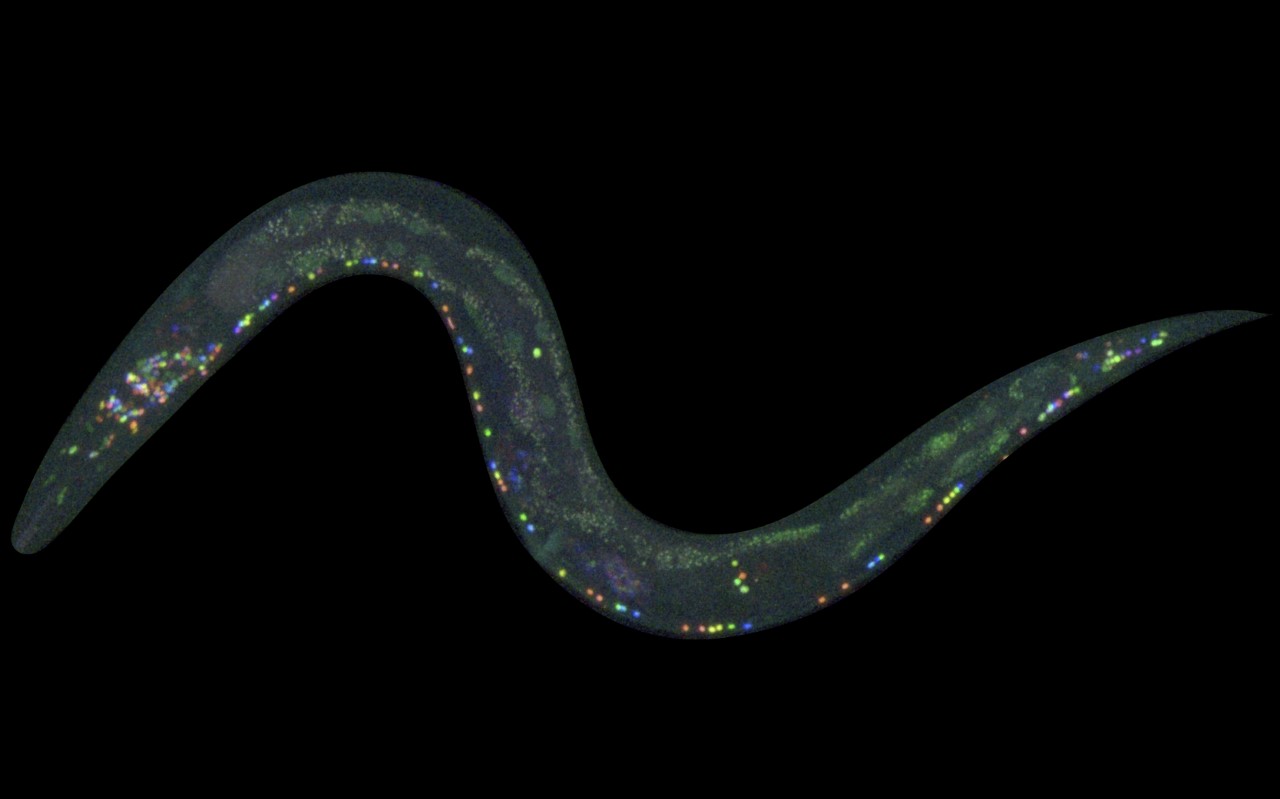
A new colouring technique developed by Eviatar Yemini and colleagues helps identify every single neuron in a worm's brain
NeuroPAL will make so many more discoveries possible about how the nervous system works. We can start to trace the genetic 'code' that gives rise to specific behaviours in the worm.
Eviatar Yemini
How do the billions of neurons in the human brain work together to give rise to thought or certain types of behaviour?
A new study led by Gates Cambridge Alumnus Eviatar Yemini [2007] outlines a colouring technique, known as NeuroPAL (a Neuronal Polychromatic Atlas of Landmarks), which makes it possible – at least in experiments with Caenorhabditis elegans (C. elegans), a worm species commonly used in biological research – to identify every single neuron in the mind of a worm.
The research appears in the current issue of the journal Cell.
NeuroPAL, which uses genetic methods to “paint” neurons with fluorescent colours, permits, for the first time ever, scientists to identify each neuron in an animal’s nervous system, all while recording a whole nervous system in action.
To conduct the research, Eviatar, now a postdoctoral researcher in the Department of Biological Sciences at Columbia, and his colleagues, created two software programmes: one that identifies all the neurons in colourful NeuroPAL worm images, and a second that takes the NeuroPAL method beyond the worm by designing optimal colouring for potential methods of identification of any cell type or tissue in any organism that permits genetic manipulations.
“We used NeuroPAL to record brainwide activity patterns in the worm and decode the nervous system at work,” says Eviatar, who is lead author of the study.
Because the colours are painted into the neuron’s DNA and linked to specific genes, they can also be used to reveal whether these specific genes are present or absent from a cell.
The researchers say that the novelty of the technique may soon be overshadowed by the discoveries it makes possible. In advance of their Cell publication, NeuroPAL was released to the scientific community, and several studies already have been published showing the utility of the tool.
“Being able to identify neurons, or other types of cells, using colour can help scientists visually understand the role of each part of a biological system,” says Eviatar. “That means when something goes wrong with the system, it may help pinpoint where the breakdown occurred.”
He adds that the research builds on questions that developed when he was doing his PhD in Molecular Biology as a Gates Cambridge Scholar.
He says: “For my PhD I developed a method to analyse behaviour of the animals (nematodes) in-depth and the effects of genes on that behaviour. But that was only half of the puzzle. My work at Cambridge focused on behaviour, but the mind at work was still sort of a black box – how exactly do the genes translate into the behaviour? What goes on inside the nervous system while the animal is processing? So in my postdoctoral research, I was determined to gain more insight into that area.”
He adds that NeuroPAL allows researchers to “see the identity, activity, and dynamic gene expression of every neuron in the mind of the worm – I cannot express how exciting that is. It will make so many more discoveries possible about how the nervous system works. We can start to trace the genetic ‘code’ that gives rise to specific behaviours in the worm.”
*Picture credit: This is a NeuroPAL worm Eviatar Yemini created using genetic engineering, that shows off his new technique. Every neuron (the coloured dots) can be identified by its colour.












